Have you ever watched a nature documentary and wondered if your little kitty, scientific name felis catus, evolved from large animals? Let’s look at the history of the lineage of the felis silvestris, aka theMiddle Eastern wildcat.
Popular internet memes show that some domestic cats’ behavior is similar to lions and tigers despite their very different sizes. Everyone loves photos of a lion sitting in a box or a tiger playing with a ball. Genetic analyses show that our kitties and wild felines share some similar DNA, like the hunting gene.
As human society became more sophisticated, cat companions further evolved into spoiled house gods with heated beds and dozens of toys that their people trip over. Their images are represented in oil portrait paintings, caricatures, and on mugs– or is that just at my house?
Our domesticated kitties are almost too domesticated. Mine just stepped on my laptop and will be waking me to terrorize me for treats at 4 a.m.
Evolution of Cats
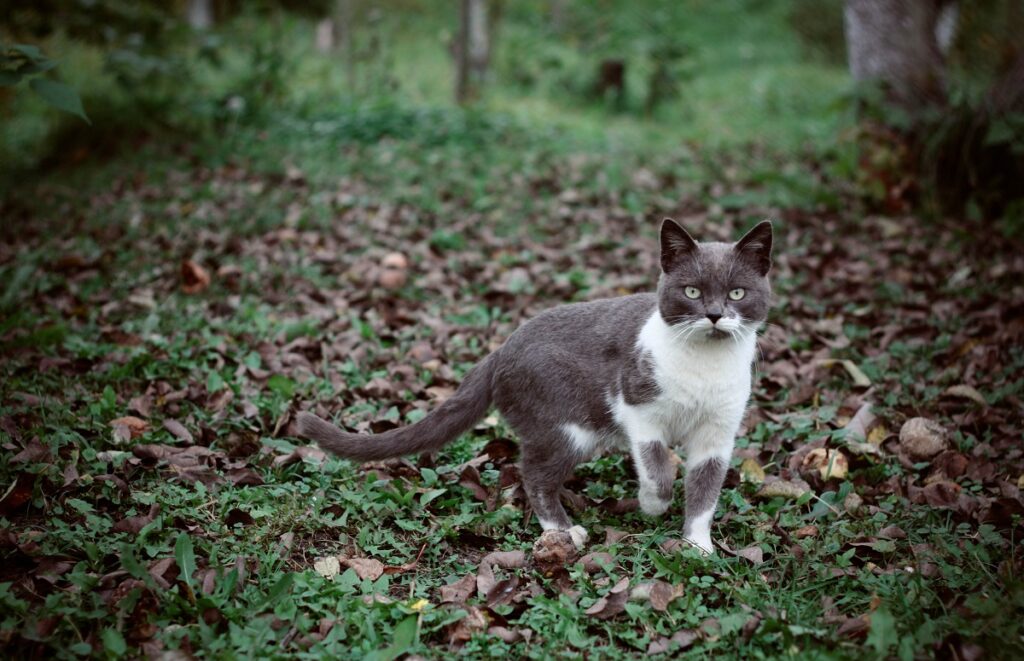
Whiskers, tales, and a deep connection – journey with us as we uncover the captivating evolution of how cats traded their wild instincts for a place in our homes and hearts!
What Did Cats Evolve From?
According to scientists, big and domestic kitties are both descendants of the North African/Southwest Asian wildcat, Felis silvestris lybica. Scientists studied ancient DNA globally and found that cat domestication began in the near east in what’s now West Asia. It was a long road from felis silvestris lybica to domestic cat, but that’s where our fur babies’ lineage originates.
A 2007 study of feline mitochondrial DNA and microsatellites of approximately 1,000 cats from many different regions (Africa, Azerbaijan, Kazakhstan, Mongolia in East Asia, and the Middle East) found five genetic lineages of the wildcat population.
Genetic analysis has demonstrated that the DNA of modern-day domestic cats throughout the world is almost identical to that of Felis sylvestris lybica, showing that this species ultimately became domestic cats. The DNA from other kitties, including the European Wildcat (Felis sylvetris) and the Central Asian and Southern African wildcats, also match.
History shows that the wildcat was first domesticated in the Near East, and some of the study authors speculate that the process began up to 12,000 years ago.
When Were Cats Domesticated?
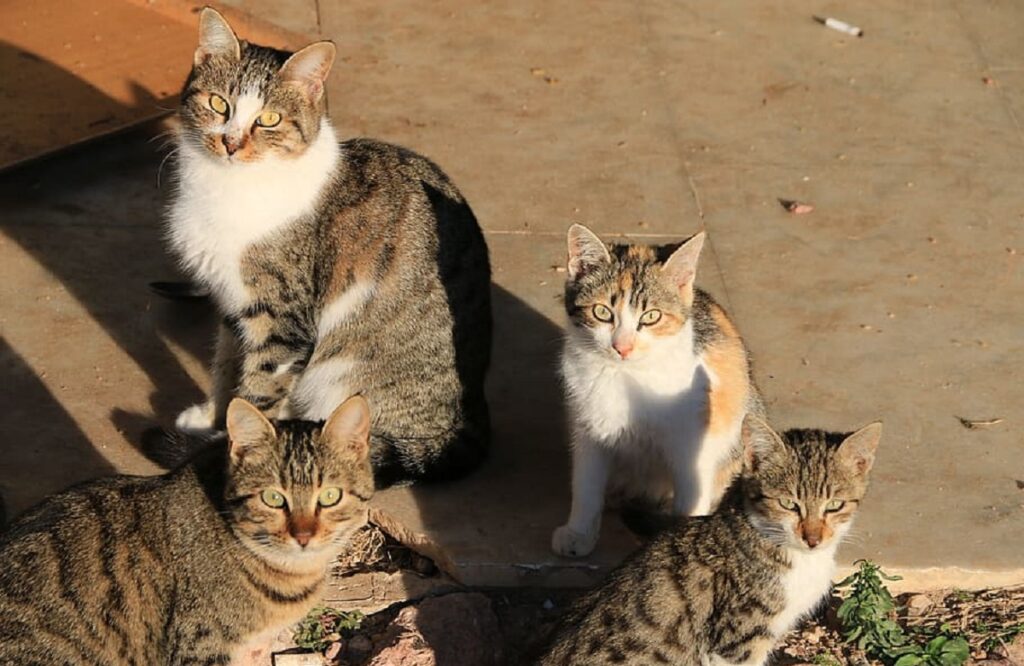
The origins of domestic cats began when they visited farms between 10,000 to 12,000 years ago during early human civilization in the near east and the current area of West Asia. It was the agricultural period that made the domestication of the cat beneficial for both parties. Scientific American reports that people allowed cats’ wild ancestors on their property to get rid of mice.
That initial domestication eventually resulted in our house pets.
According to research by Casey Smith, DNA analysis shows that kitties lived near people for thousands of years before opting to become cuddly pets. A new species of cat, felis catus, finally evolved and stayed near people. The work of Casey Smith shows that it took a long time before cats stopped running away from people after eating their mice and became domesticated cats.
History of Cats
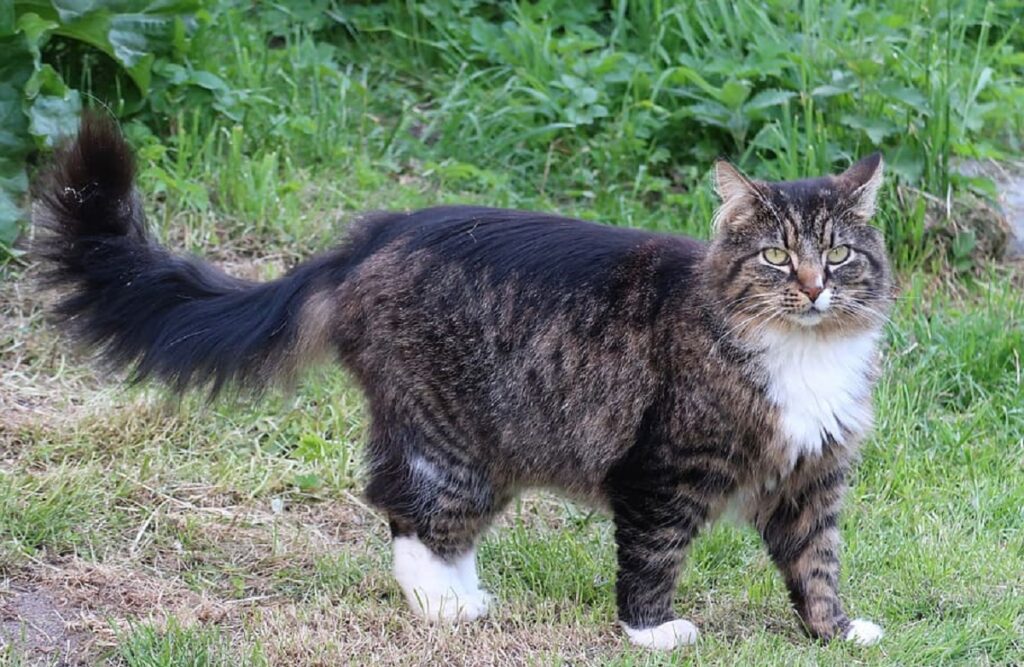
Kitties were adored in ancient Egypt, where people worshiped the goddess Bastet, protector of the home, domesticity, women’s secrets, cats, fertility, and childbirth. Egyptian artifacts include cat-headed god idols and art in its museum. The Egyptians sacrificed many a cat to Bastet, mummified them, and filled a cemetery with cat mummies.
Killing a cat or taking a cat out of ancient Egypt was prohibited and punishable by death. Some wealthy people adorned their felines in gold. That archaeological evidence reveals how ancient Egyptians felt about their domesticated cats.
Scientists found feline remains from 4,200 to 2,300 BC in Poland, so we know they migrated around then to Central Europe to charm people for food scraps and rodents. That was the beginning of the European wildcat, and they made their way all over the Old World.
Scientific American reports that around 2,000 years ago, domestic kitties arrived in the Orient via trade routes between Greece and Rome and the Far East.
According to “The Domestic Cat in Roman Civilization” by Malcolm Drew Donalson, cats were introduced to the Roman Empire in 31 BC when Egypt became a province. A cat skeleton from this period has a shortened skull matching those of today’s domesticated cats.
Researchers believe that kitties arrived in Australia in the 1600s with European explorers.
Why Were Cats Domesticated?
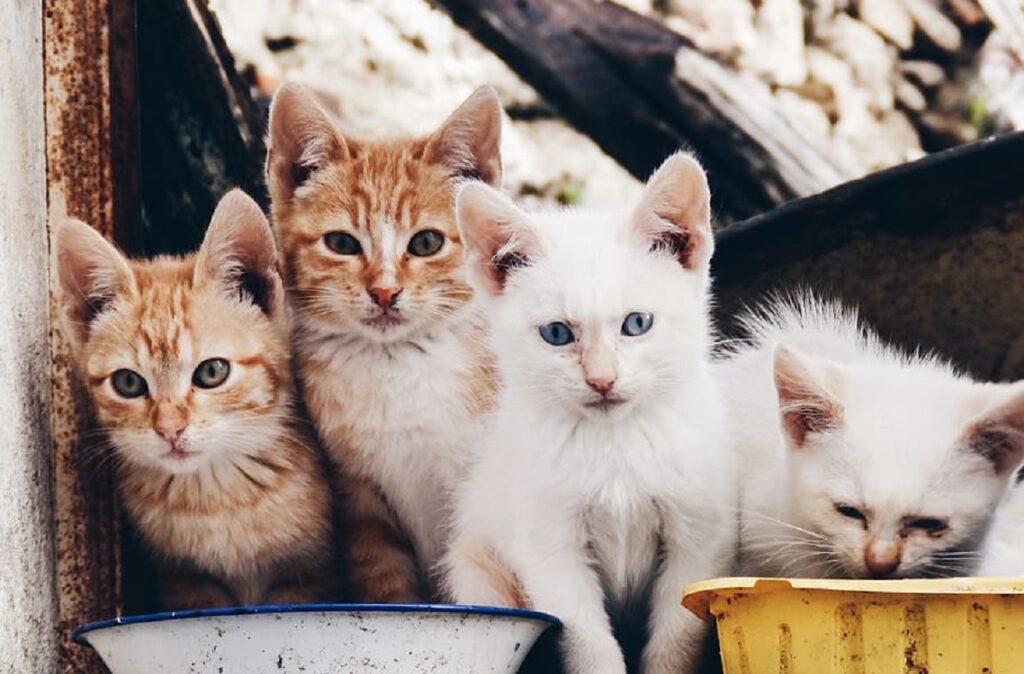
What led to domesticated kitties? Cat domestication began when people discovered that kitties, who are obligate carnivores, eliminated the house mouse that invaded their grains and other food sources. Also, small cats and kittens are cute and relatively harmless compared to their gigantic counterparts.
It’s only been in the last 60-70 years that people have kept an indoor cat–which is truly cat domestication.
Kitties who were tolerant of people wandered closest to the farm, and natural selection occurred, so the ones who dared to get closer survived by eating mice.
Did Cats Domesticate Themselves?
Kitties are a bit willful and do what they want. Researcher Carlos Driscoll told the Washington Post that they domesticated themselves to some extent because they noticed that rodents flocked to human stores of grain and knew they could feast on mice by staying near human agriculture spots. Farmers loved cats with mousing traits.
How Long Have Cats Been Domesticated?
Cat skeletons show that the domestication of the wildcat began 10,000 years ago to 12,000 years ago.
First Domesticated Cat
The first domesticated cat in history was in the Old World Fertile Crescent area, which is now the middle east and West Asia.
In 2008, Wim Van Neer and his colleagues at the Royal Belgian Institute of Natural Sciences in Brussels found six cat skeletons buried in an elite Egyptian cemetery from the fourth millennium BC. They studied tooth and bone samples and determined that both look like those of modern domestic kitties, which means they were bred by humans outside of breeding season.
The Smithsonian’s National Museum of Natural History has a cast of a kitty head dating back to 332-30 B.C.
Cat Ancestors
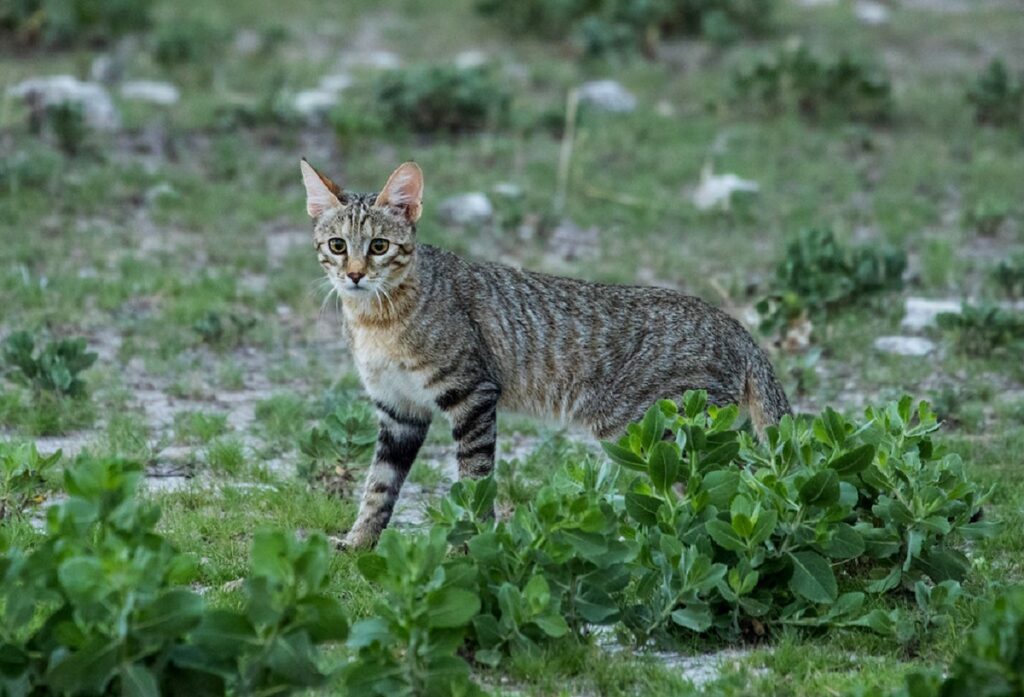
The common ancestor of the modern domestic cat was the North African/Southwest Asian wildcat, Felis silvestris lybica, according to ancient DNA. Now there are 300-600 million cats in the world. If you like kitty statistics, we have lots of interesting facts to share, including a cat age calculator to figure out how old your fur baby is in human years.
Sources of Evidence of Cats Domestication
Archaeological evidence provides evidence of cat domestication. Cat skeletons are found in human-populated areas. Scientists found cat remains in China that showed there might have been a short period of cat domestication of the leopard cat in China/Central Asia, but no evidence connects them to current kitties.
In 2001, researchers from the Chinese Academy of Sciences in Beijing discovered more than one cat born in agricultural areas in northern China (Shaanxi province) dating from around 3500 BC, which indicates cat domestication. However, no lineage can be traced from the domesticated leopard cat in China to modern kitties.
Historical and Archaeological Support
Recently scientists performing an archaeological record of a dig in Cyprus found an adult human buried with stone tools and a cat 9,500 years ago, but Egyptian art 4,000 years ago depicts the most domestic cat evidence.
Genetic and Evolutionary Findings
One study found that 13 genes changed as felines evolved from feral to friendly. The genes are linked to cognition and behavior, especially fear responses and learning new behaviors using food rewards.
Divergence of Domestic Cat Breeds
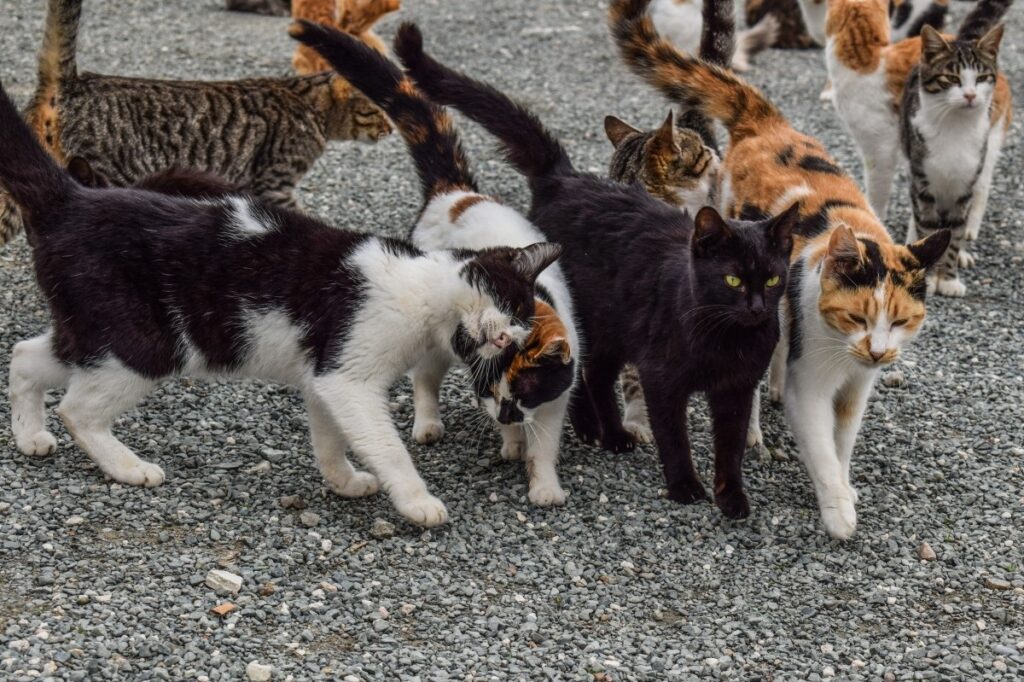
People have bred domesticated cats to increase the traits they like and decrease the undesired ones. International Cat Association recognizes 71 breeds. Breeders have tried to genetically reproduce traits like friendliness, relaxed and pleasant temperaments, affection, playfulness, and getting along with other cats, as well as preferred physical characteristics.
Leslie Lyons at the University of California, Davis, discovered that DNA differences between today’s European and Oriental domestic cat breeds show more than 700 years of independent cat breeding in Asia and Europe.
Behavior Observations
The University of Helsinki performed a study and determined that there are seven behavioral observations of kitties: activity/playfulness, fearfulness, aggressive behavior toward humans, sociability toward people, sociability toward other kitties, litter box precision, and excessive grooming.
Current Cat Breeds
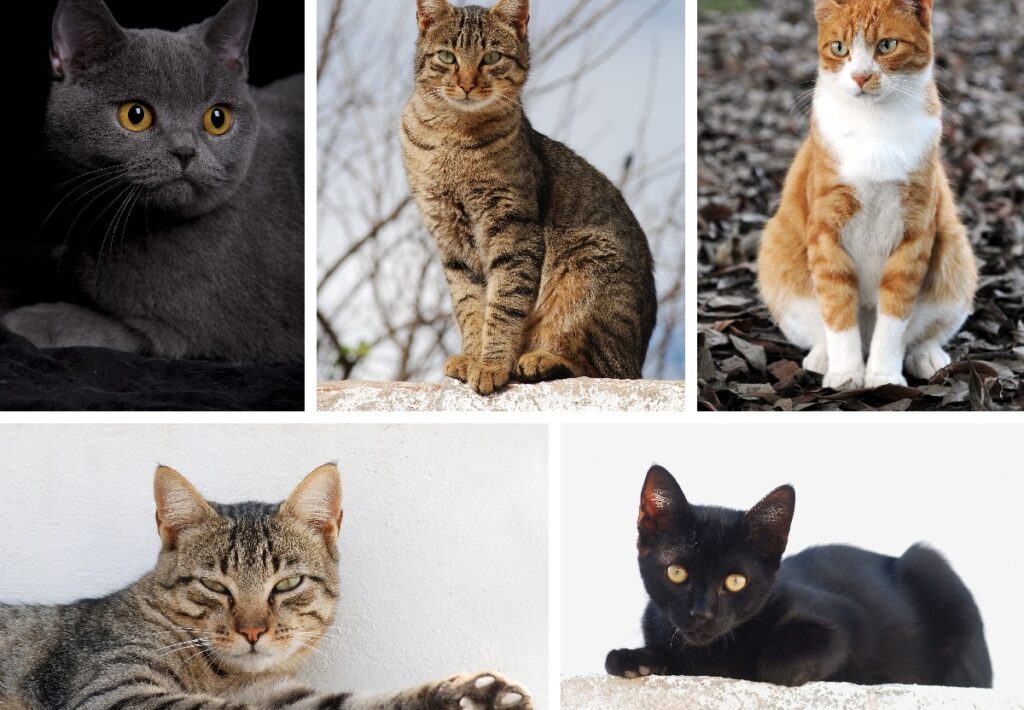
DNA analysis shows that all cat breeds came from eight different regions and then bred and relocated. These eight lineages are Europe, Egypt (the Fertile Crescent), India, Southeast Asia, Arabian Sea, East Asia, and the Mediterranean.
There are 71 modern breeds! People have been very busy engaging in selective breeding to fill a third of American households that have kitties. The first cat show was in 1871 at the Crystal Palace in London, but most cat breeds have been created in the last half-century.
Around a dozen genes determine the differences in texture, coat color, and fur length. Domesticated cat breeds differ more in coat color than other physical attributes as dogs do.
You’ll be surprised to learn about the variety of modern breeds in this cat breed list.
Cats Before Domestication
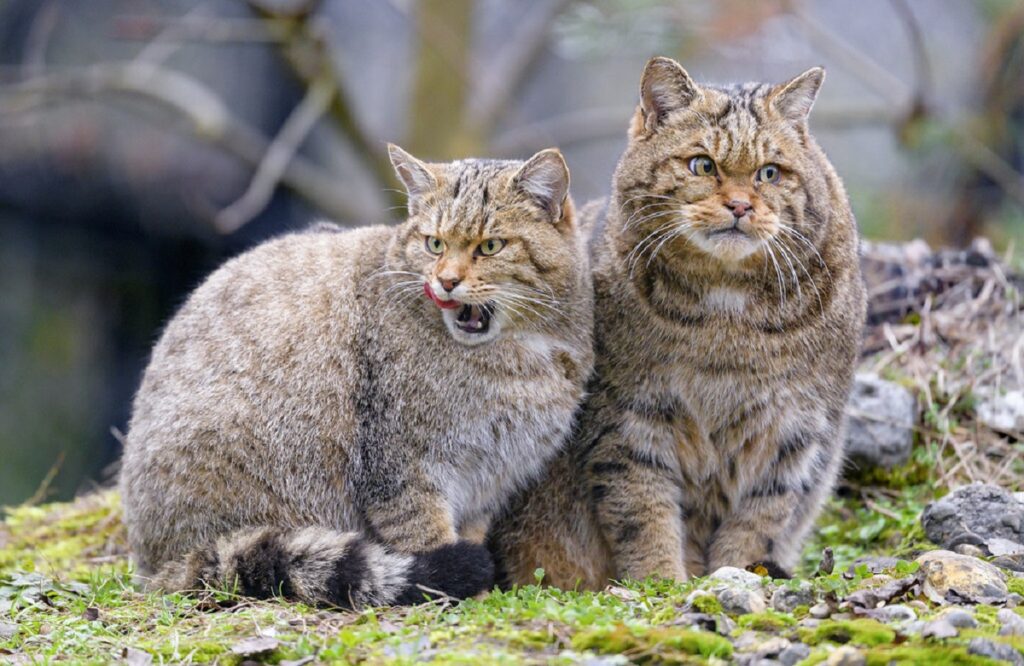
Before cat domestication, they were very aggressive. Researchers believe that our kitties form memories and learn through rewards to tolerate and even enjoy human interaction. Kitties don’t live in a herd like other domestic animals that were domesticated using the pack model.
Other differences include:
- Wildcats have slightly larger brains proportionately than their domestic counterparts and usually have bigger heads because they are a little larger than their domestic cousins.
- Domesticated cats have vertical, slit pupils, but large kitty beasts have round pupils for better sight.
- Domesticated kitties purr, and lions roar because of throat anatomy differences.
Wild cats and domesticated cats share 95% of the same DNA, so genetically, the similarities are more numerous than the differences.
They both enjoy 16-20 hours of sleep each day, a great sense of smell, are carnivores, spend 30 to 50% of their waking hours grooming, do a lot of stalking, love playing (read: laser pointers, hopping into boxes, wand toys, etc.) and catnip, are territorial and vocal, play with and save food, and like kneading.
Cats Breeding
People didn’t deliberately breed kitties until about 150 years ago. The opposite of selective breeding is when cats in the wild interbreed freely, blurring the taxa line.
Pet Cats
We love our kitties and they are like fur babies living in our homes, but kitties haven’t been indoor residents for more than a handful of decades. How did that finally happen?
When Did Cats Become Pets?
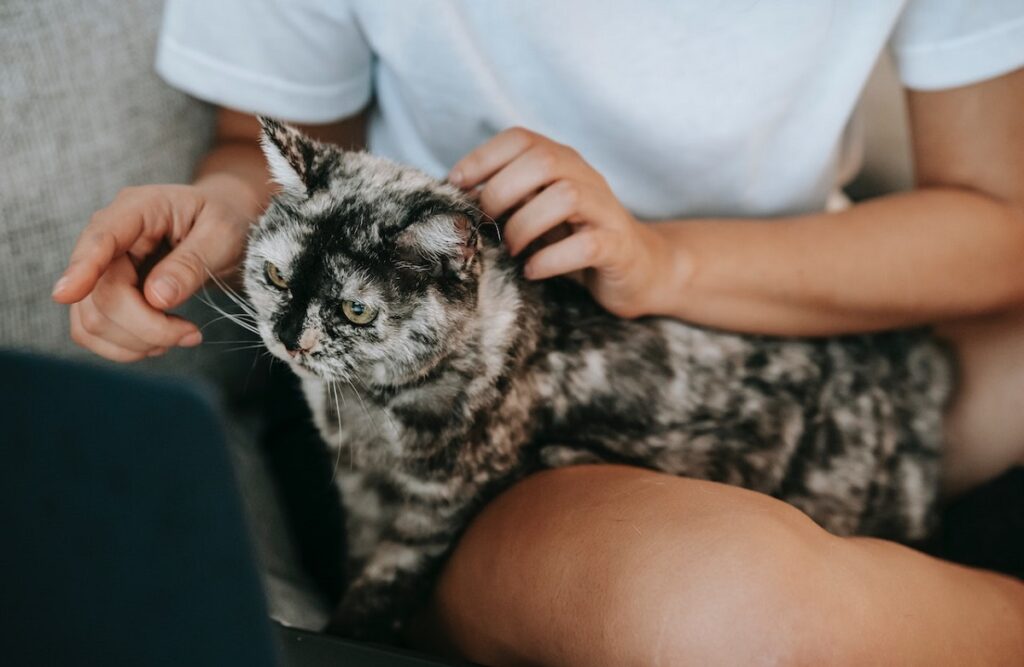
Kitties didn’t become pets the moment they decided to handle farmers’ vermin problems. Initially, there was a mutually beneficial, almost business-like arrangement between people and mousers. It was a long journey before they became a popular pet, and cat domestication was the best thing that ever happened to them.
Researchers found paintings from the golden age of ancient Egypt, around 3,600 years ago, of kitties eating from bowls, laying under chairs, snacking on scrap food, and sometimes wearing a cat collar or leash–indicating that kitties were members of the human family.
Common Features of Cats
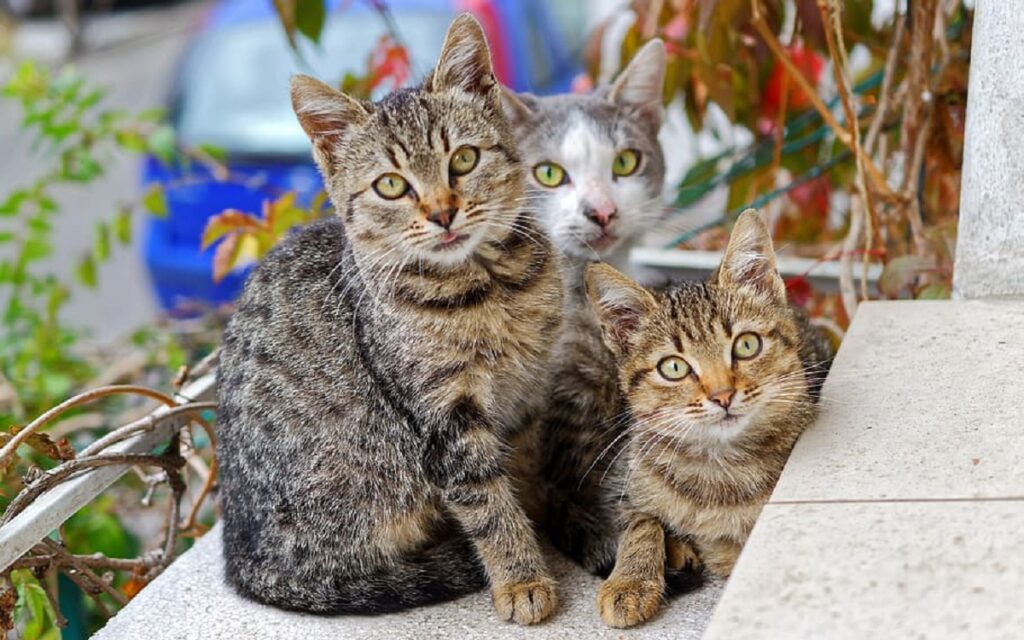
Some kitty features include a super olfactory sense, the ability to run 30 miles per hour (mini cheetahs!), their tail helps them balance, their distance vision is better than close-up, they are flexible enough to lick their body parts that are far from their tongues, their whiskers sense how wide an area is and if they can fit through, and they possess exceptional super kitty hearing ability.
Additional kitty attributes are their abrasive tongue–the perfect grooming tool, their thick paw pads that help provide smooth landings when jumping, they have tree-climbing claws, their fur regulates body temperature, and they can jump six times their height.
Domestication of dogs shows that dogs have changed much more from those they descended from because people bred them for specific tasks, which meant the genetic altering of many characteristics.
When scientists compared the DNA of kitties throughout history, they found that the wild and domestic cats showed no major DNA differences in their genetic makeup because people aren’t breeding them for specific physical attributes.
Speaking of physical characteristics, V.J. Crossley found that breed, coat color, and hair length may reveal which kitties are more susceptible to hyperthyroidism.
Interestingly, coat color is a sign of domestication. The Middle Ages saw blotched or striped coat color markings, which later evolved into tabby coloring. The gene for a tabby coat dates back to the Ottoman Empire in Southwest Asia and was later common in Europe and Africa.
Not until the 18th century did markings become common enough to be associated with domestic cats, and in the 19th century, cat lovers started choosing traits, including coat color, to create fancy breeds.
FAQs
Where Did Cats Come From?
Cats originated in the Old World Fertile Crescent, which is now the middle east and West Asia. Near eastern wildcats are the common ancestor of the domestic kitty after establishing a presence at farms where they removed mice. That’s an example of nature ecology, which studies interactions among living things and their environment.
How Were Cats Domesticated?
Cats began frequenting farms when they noticed a mouse sniffing around, and humans were happy for the rodent relief. The mousers became regular visitors in a mutually advantageous relationship. Rodent hunting became much easier for them when they were near people.
In the middle ages, some cats were pets, but they weren’t as popular due to a perceived association with witches and with the devil. Heartbreakingly, many cats were killed. Because of these associations, many thought that cats had no place in the sacred spaces of religious orders.
Jean-Denis Vigne at the National Museum of Natural History in Paris and his colleagues said they discovered the earliest evidence of humans taming kitties in history was 10,000 years ago, making them less aggressive.
Where Do House Cats Come From?
House cats descend from their common ancestor, North African Fertile Crescent/Southwest Asian wildcats, Felis silvestris lybica. The feral cats eventually spent more time with people in the hopes of receiving food and protection. It took many years, but they finally became house cats.
How Did Cats Come to America?
Christopher Columbus and others coming from Europe brought cats with them. Ships and boats carried resident kitties to dispose of rodents. In general, evidence suggests cats spread throughout the world in maritime vessels and found in port cities.
Passengers on the Mayflower and residents of Jamestown brought mousers with them to eat rodents and also for good luck, another nature ecology phenomenon.
There Were No Cats in the United States Until Europeans Brought Them Here.
It’s difficult to imagine a cat-less America. Kitties spread to port cities as sea vessels carried them to eat rats aboard and brought them to their destinations.
Where Are Cats Native To?
The oldest remains of kitties have been found in North Africa and West Asia, where they all had a common ancestor.
Were Cats Domesticated Before Dogs?
Cat domestication began after the domestication of dogs in northern Eurasia between 14,000 and 29,000 years ago. Kitties and other wild animals became domesticated once humans settled into one location.
How Long Have Cats Been on Earth?
The 37 recognized species of the Felidae family, characterized by a rounded head and skeletal structure descended from a common ancestor, probably living in Asia around 10-12 million years ago.
Are Cats Related to Lions?
Domesticated cats have evolved from lions and tigers, who descended from carnivores called miacids. Modern wild cats’ originated from three species – European wildcats, African wildcats, and the Asiatic desert cat.
Final Thought
We hope you enjoyed reading about the domestication of cats. They have come a long way, and we’re lucky we can share our homes with them, as felines and humans enjoy a very special bond. They provide so much love and amusement. If you don’t live with a cat, you might want to research how much a cat costs per year and adopt one.
Please leave a comment and/or share if you’d like.


